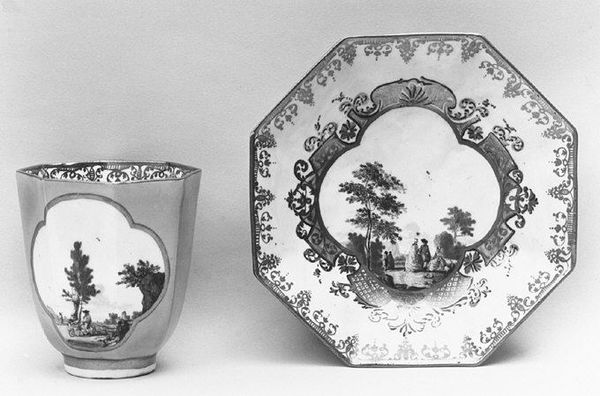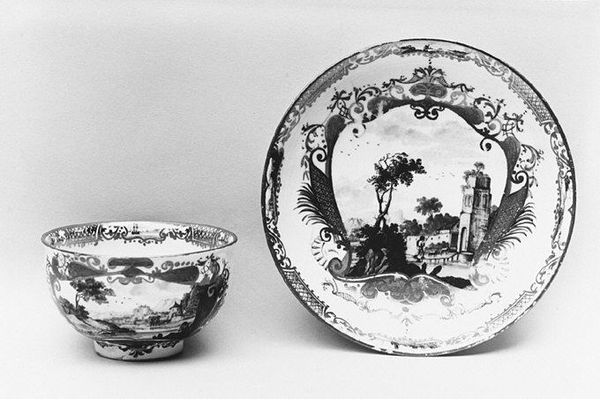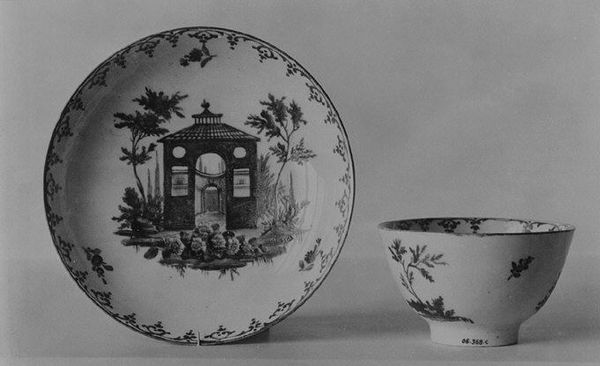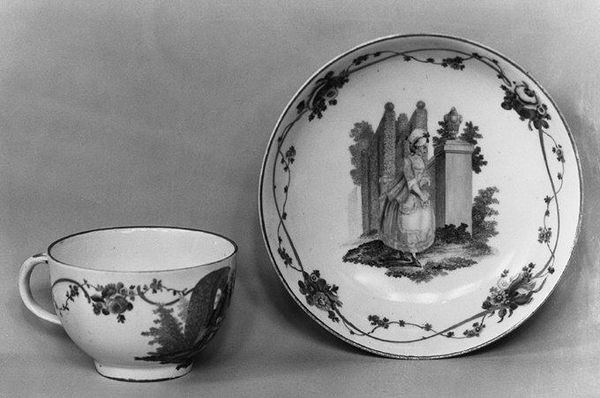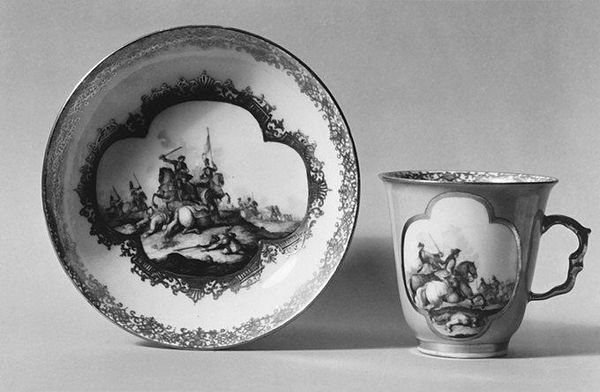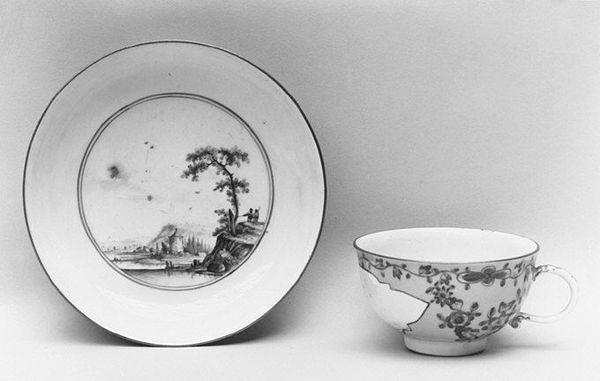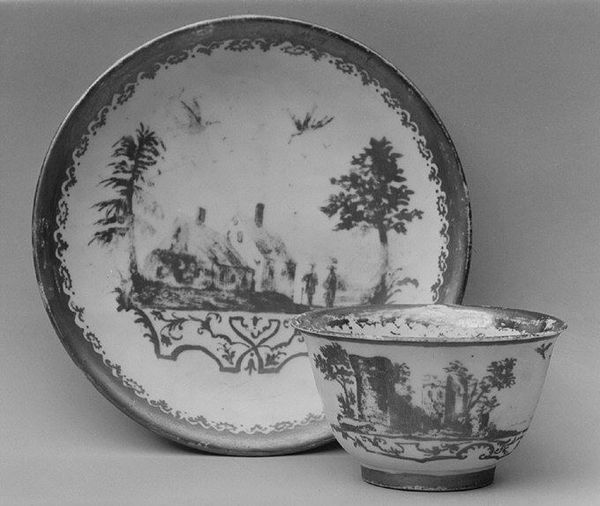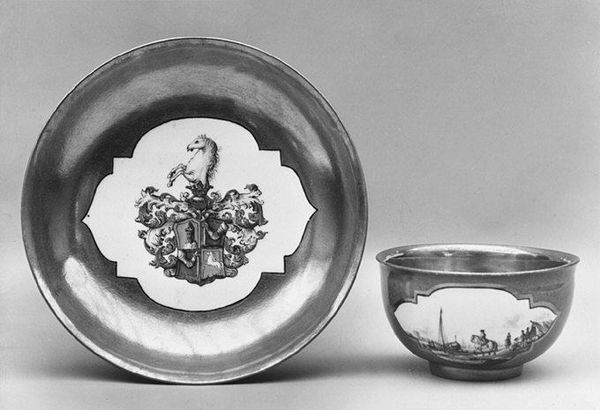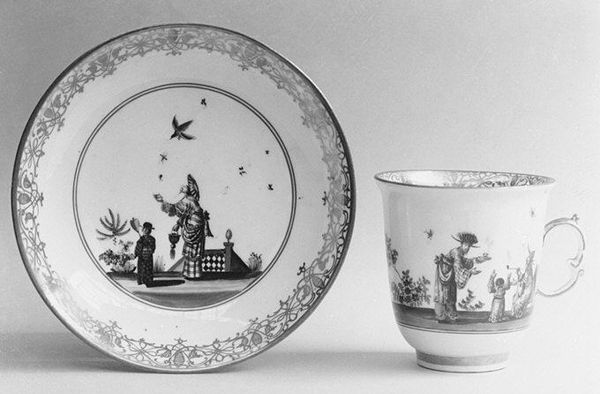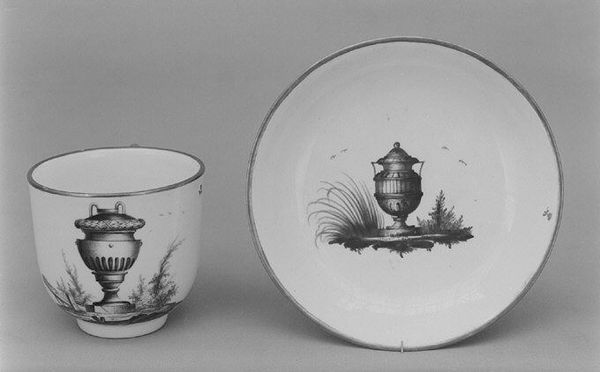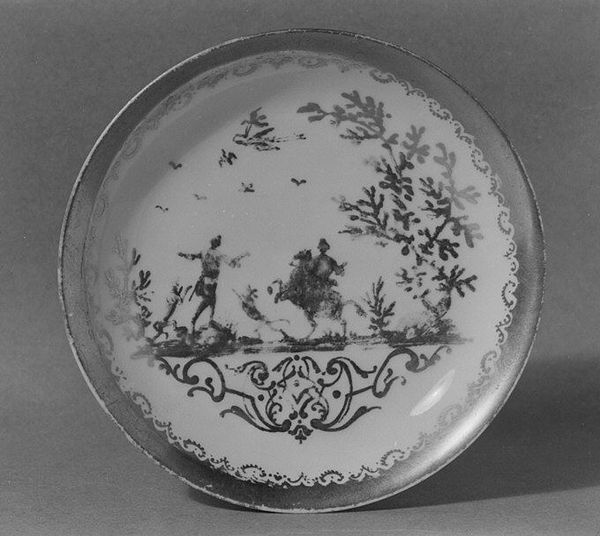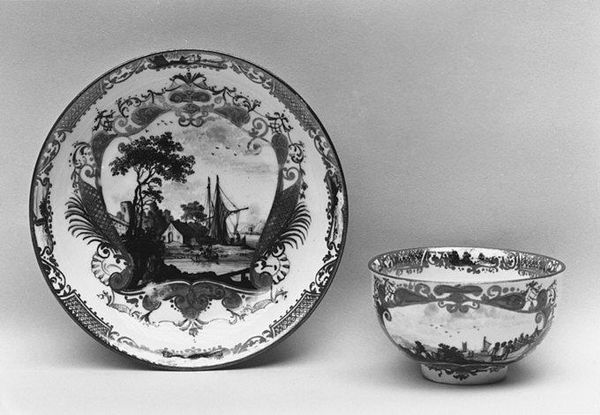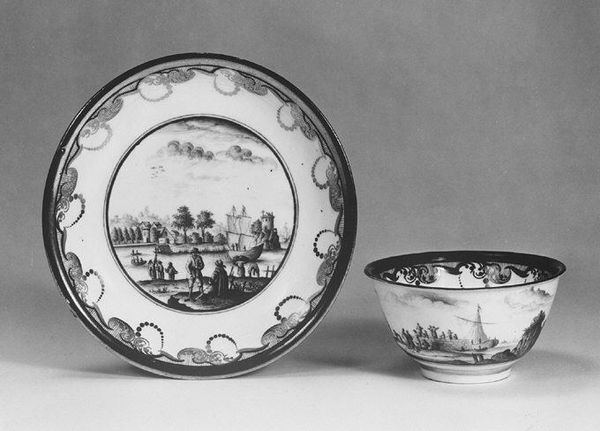
ceramic, porcelain
#
landscape
#
ceramic
#
porcelain
#
sculptural image
#
cityscape
#
decorative-art
#
rococo
Dimensions: Height (teabowl): 1 3/4 in. (4.4 cm); Diameter (saucer): 4 3/8 in. (11.1 cm)
Copyright: Public Domain
Curator: We are looking at a Teabowl and saucer, made between 1760 and 1780 by the Cozzi Manufactory. The set, rendered in porcelain, is a fine example of Rococo style decorative art, currently held at the Metropolitan Museum. Editor: Immediately, the delicate landscapes wrapping both the bowl and saucer capture my eye. The black-and-white decoration really gives off a restrained, almost melancholic feel. What do you make of its symbolism? Curator: The cityscape motif, quite popular then, signified not just status, but an embrace of civilized life, the ordered beauty of urban spaces juxtaposed with nature. Consider the architectural details meticulously depicted; arches, formal gardens. These echoed classical ideals but made portable and personal through everyday use. Editor: Right. And Cozzi porcelain, being a response to the rising fashion for East Asian ceramics, also indicates larger flows of global trade and consumption. Do we know anything specific about the manufacturing process in this period that might illuminate class and taste markers? Curator: Well, porcelain manufacture was very labour-intensive and costly. Each piece reveals a desire for refinement. Tea drinking became strongly associated with social rituals, a visual language of grace, luxury, and aspiration within the burgeoning mercantile class of Europe. Editor: That's true. It's fascinating how something as commonplace as a tea set embodies not just artistic ideals, but complex economic, cultural, and even colonial realities of the 18th century. Thinking about the embodied labour also helps deconstruct those romanticized symbols. Curator: Indeed. When we delve into how cultural symbols work, as embodied here, and link them with material conditions, objects like this teabowl transcend simple aesthetics and reveal social relations through artistry. Editor: For me, viewing an object in this way contextualises our consumption and how that's related to production. Curator: I agree entirely. Every emblem invites decoding; in turn it encourages questions. That opens up endless stories for objects which once seemed ordinary.
Comments
No comments
Be the first to comment and join the conversation on the ultimate creative platform.
